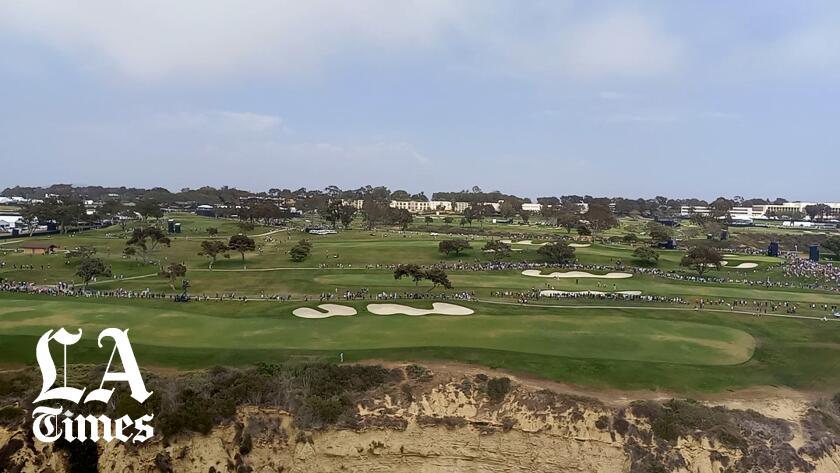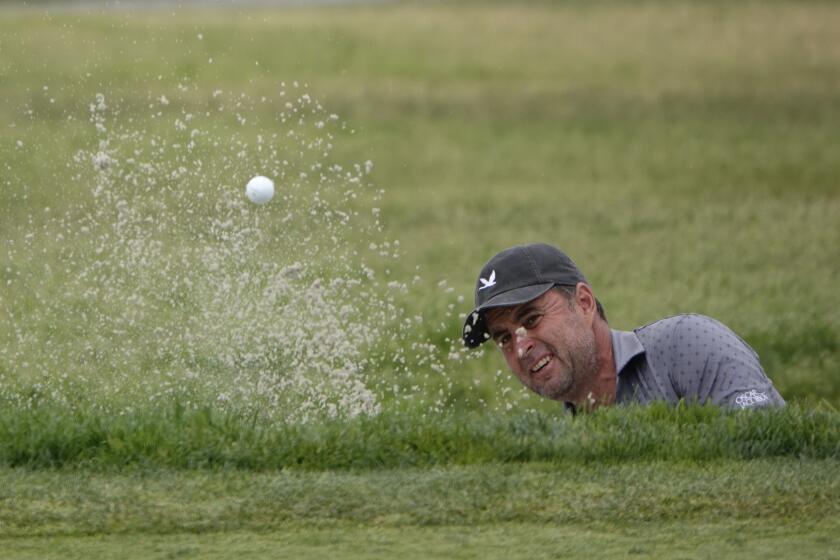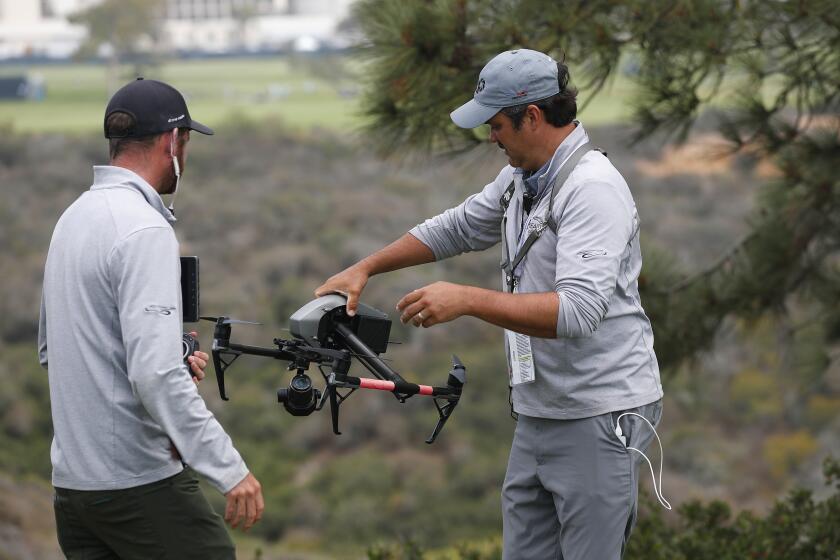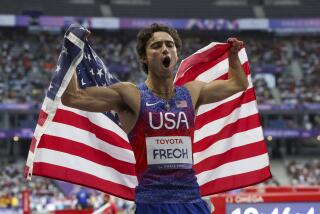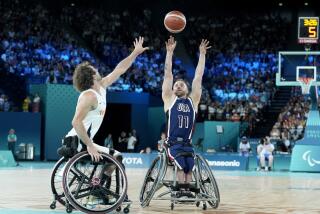Paragliders have best seat, and views, in house at Torrey Pines
- Share via
Paraglider pilot Russ Gibfried talks about the unique vantagepoint he’s enjoyed at the U.S. Open this week flying over Torrey Pines Golf Course in San Diego.
- Share via
LA JOLLA — The best seat at the U.S. Open just might be a cocoon.
Just ask one of the dozens of paragliders cruising in peaceful silence above Torrey Pines as the world’s best golfers battle it out below. They sit in a “speed-bag” — think recliner meets sleeping bag — and dangle under a colorful fabric, wing-like canopy that, even without a motor, can keep a pilot at a consistent altitude indefinitely. The flights can last for hours, with the paragliders moving in slow loops over the golf course, riding the winds that come off the Pacific Ocean and shoot upward as they meet the cliffs of La Jolla.
The pilots, who take flight at the adjacent gliderport, float a few hundred feet off the ground, but close enough to spot golf balls in the rough that might be hard to find at ground level, or to use the flags on the green as cues to the wind patterns.
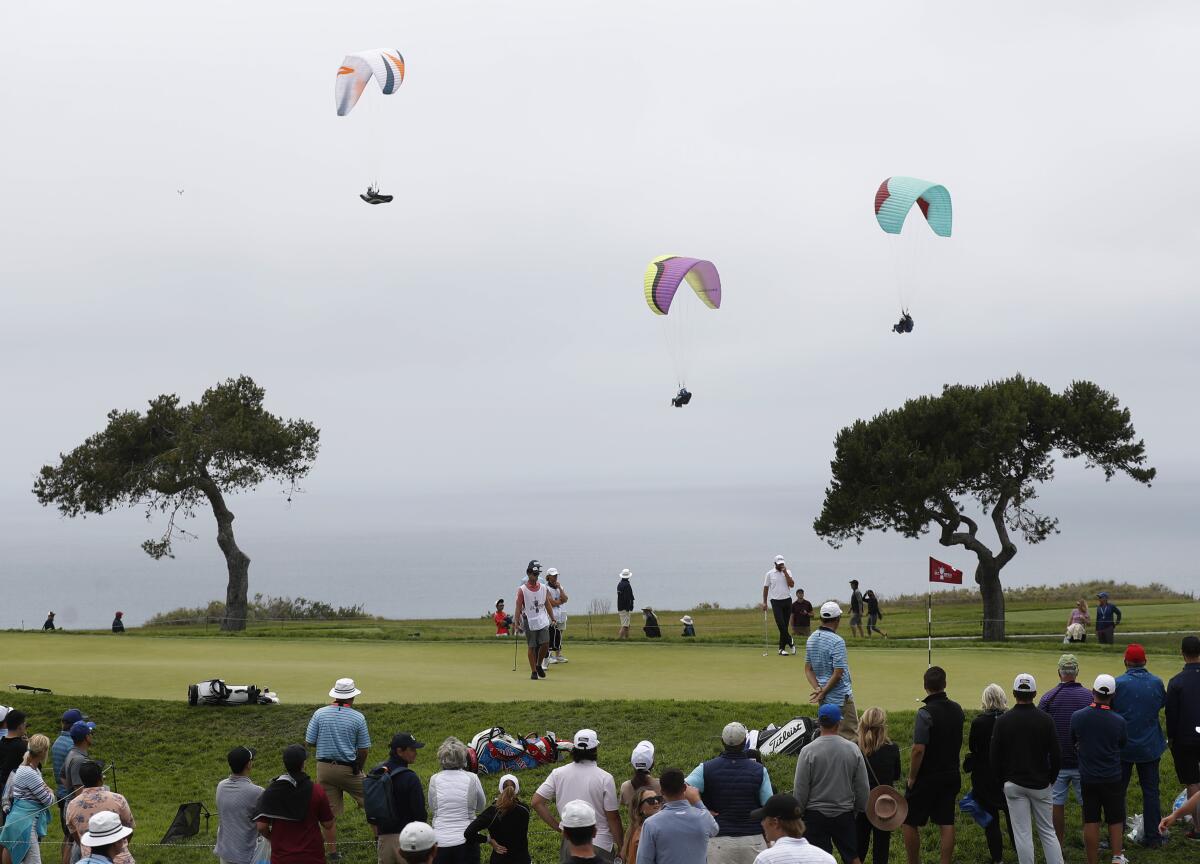
“I can see when the big names are coming just from the size of the gallery,” said pilot Russ Gibfried, who retired from his job in the tech industry and now spends as much time as he can soaring above San Diego. “I can traverse back and forth from tee off to green, then go back and see the next person tee off. Having a glider is the best seat in the house.”
At Hilton Head, S.C., the boaters gather in the Calibogue Sound and blast their horns at the end of the tournament. When the PGA Tour goes to Pebble Beach, it’s not uncommon to see someone in the background strolling up the sands of Carmel. But at this place, it’s all about the paragliders.
“I think it’s synonymous with Torrey Pines,” said Rory McIlroy, a four-time major champion. “I mean, it’s cool. You’ve got the gliderport over there, and anyone who has tuned in and watched this tournament or the Farmers over the last few years, the gliders are just sort of part of the landscape.”
Richard Bland is a 48-year-old from England who won for the first time last month, and he’s tied with Russell Henley after two rounds of the U.S. Open.
Would McIlroy ever try it?
“No,” he said flatly. “I was up in a hot-air balloon once and I hated it. Ever since then, I just think it would be too quiet for me, little too eerie.”
For paraglider enthusiasts, that quiet is a big part of the appeal. The roar of the crowds is audible — they cheered Friday for unlikely co-leaders Richard Bland and Russell Henley — but mostly the pilots are alone with their thoughts.
“It’s a peaceful enough place to fly that you’re not too worried about the flying, so you can pay attention to what’s going on on the course, and it does feel like a privileged place to see the tournament from,” said David Hunt, who switched to paragliding two years ago after earning his pilot’s license for fixed-wing aircraft and helicopters as a hobbyist.
“But you’re also thinking about not interfering as well, especially when it’s sunny and you don’t want to cast a shadow on them.”
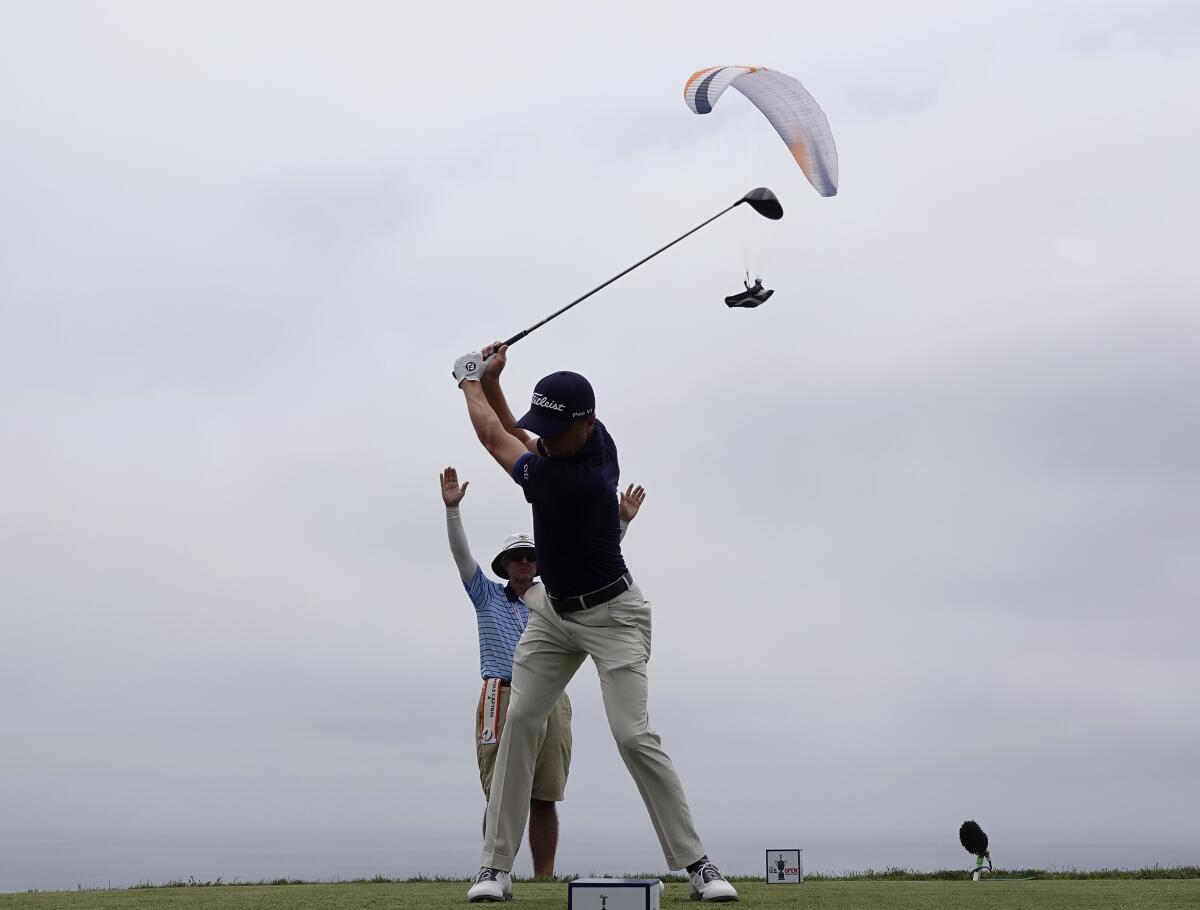
Both Hunt and Gibfried, who worked in the San Diego tech industry, said that’s a common background in the paragliding community. They consider Torrey Pines the Augusta National of gliderports, with grassy slopes for take-offs and landings — which is typically dirt in other places — winds that are frequently ideal, friendly people, and even a snack bar. Amid the experienced flyers are novices taking paragliding lessons, and instructors taking people up for tandem soaring at $175 per flight.
NBC will utilize many different cameras during its U.S. Open coverage this week, and drones will help capture the natural beauty of Torrey Pines.
The Torrey Pines Gliderport, which is owned by the city of San Diego, was popular for radio-controlled model airplanes in the 1960s and hang gliders in the 1970s — and is still used for those — but became a mecca for paragliding in the 1980s.
Fatal crashes are rare, but they do happen. In 2019, two solo pilots died after a collision over the gliderport. They crashed into each other about 35 feet off the ground, became entwined, and tumbled onto the steep cliff face.
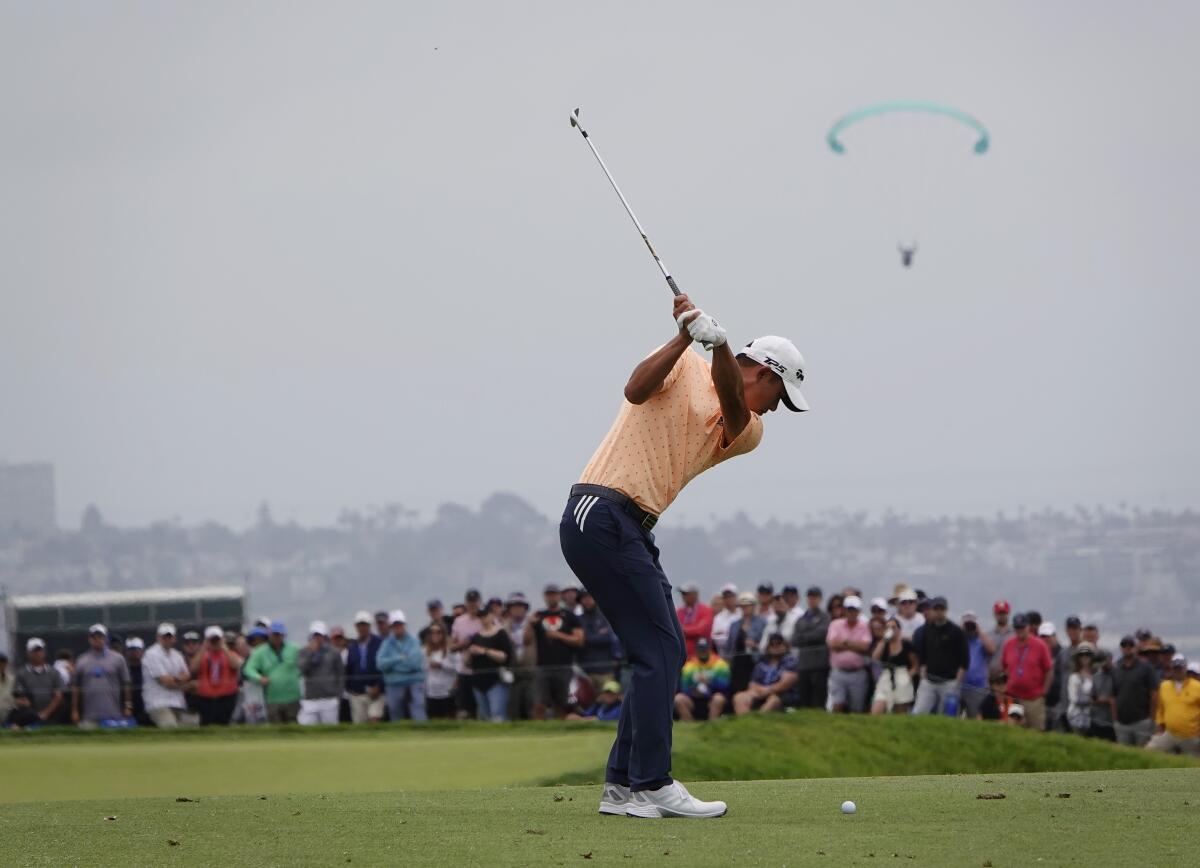
Gibfried, who took up the hobby two years ago after he and his daughter took tandem flights, said paragliders at the site follow strict guidelines and protocols to minimize the risk.
“Surprisingly, these gliders want to fly themselves,” he said. “They’re just engineered in a way that once you bring them up, they just want to fly. So most mistakes are pilot error, not the glider or conditions. If you ever get in trouble, you put your hands up and then they’ll recover automatically — untwist, or come out of a spin if one side happens to collapse, it corrects in a second or two.”
Gibfried was soaring past the iconic par-three third hole Friday when he heard the crowd erupt. He circled back and spotted a ball two feet from the pin. He’s a golf fan, and stuck around to watch the player putt out for birdie.
“I couldn’t get tickets to go,” he said. “This was sort of the back door.”
More to Read
Go beyond the scoreboard
Get the latest on L.A.'s teams in the daily Sports Report newsletter.
You may occasionally receive promotional content from the Los Angeles Times.
